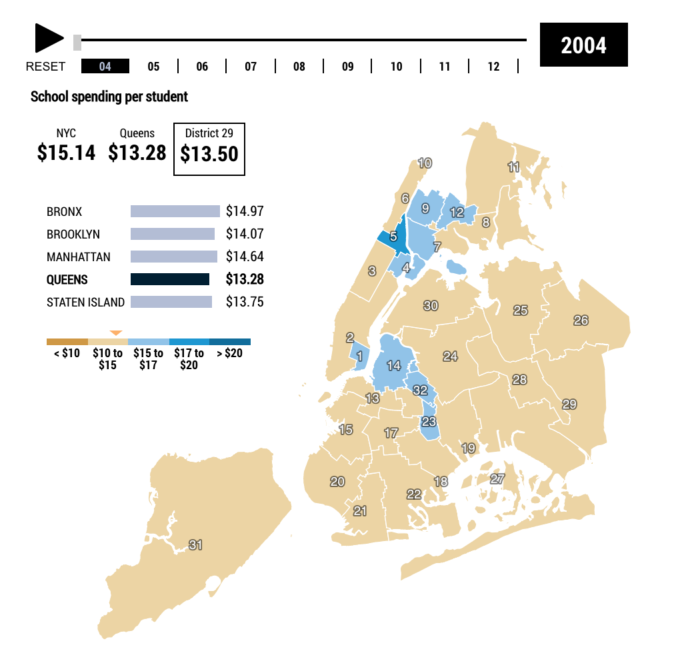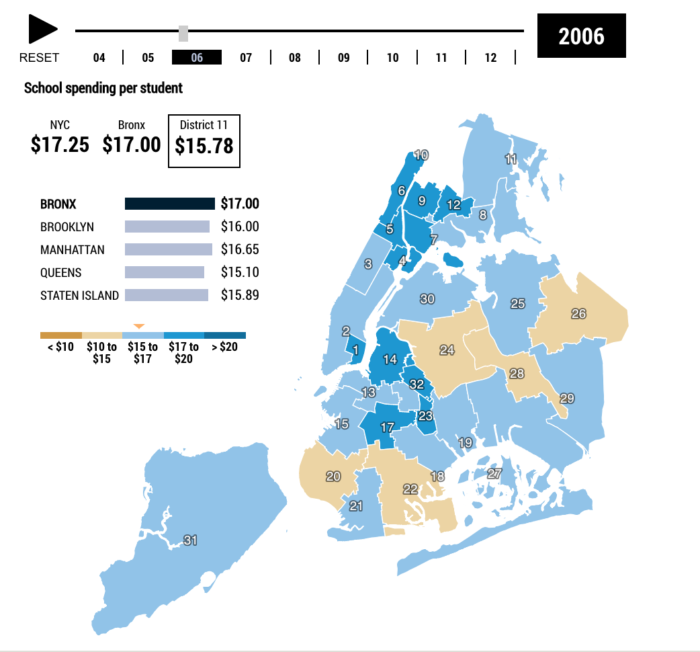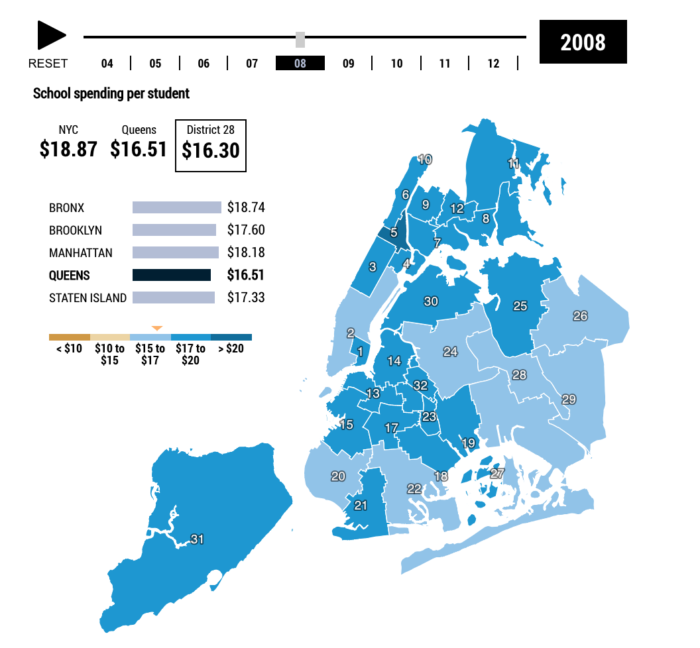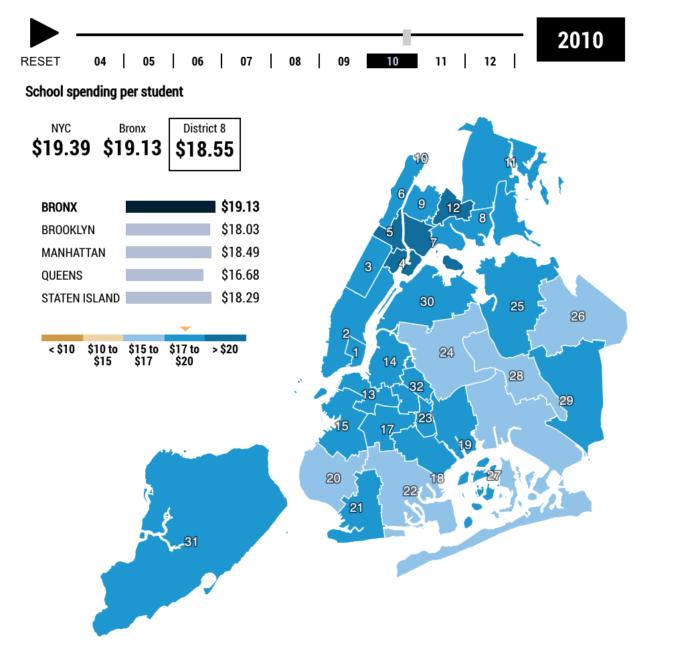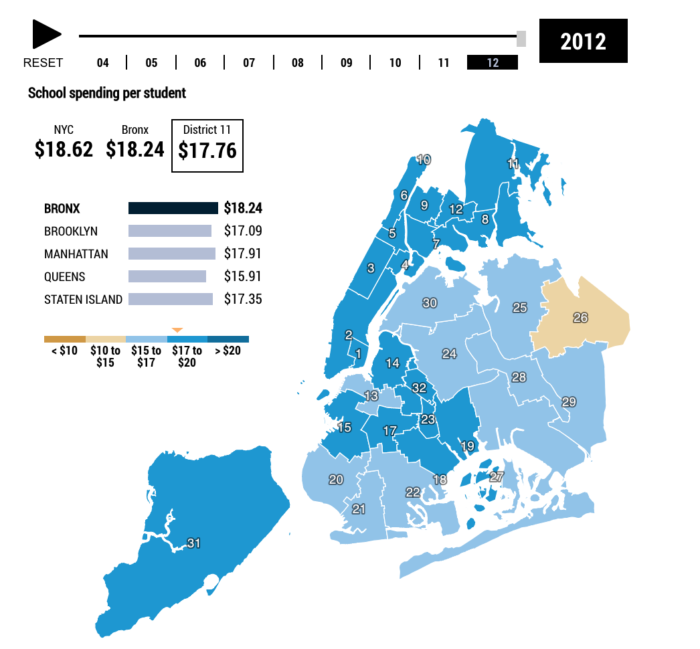Serving a population of 1.1 million students, New York City houses the largest public school district in the United States. Although it’s one of many school districts in New York State, NYC’s schools are further divided into 31 community school districts which serve different populations of students.
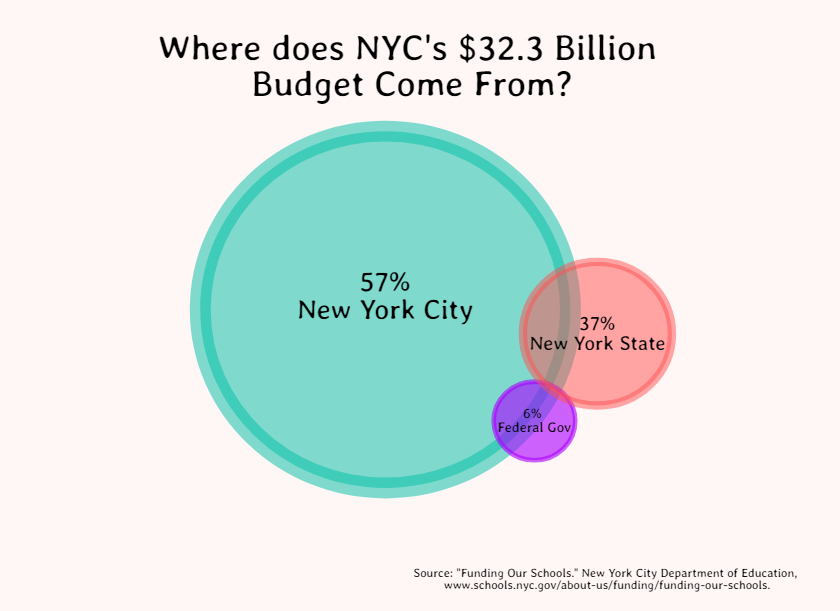
Since 2007, the schools have been funded according to the “Fair Student Funding” formula, which handles around $6 billion of the education budget annually. However, schools aren’t funded equally, or even equitably. FSF is designed to allocate funding based on student characteristics, with schools housing larger numbers of need-worthy students receiving more funds. Though the formula was regarded as largely “progressive”, it has yet to live up to its promises as underfunded schools have yet to catch up to wealthier ones.
Focusing on FSF obscures the reality on the ground. As a result of intense school segregation, some NYC schools are populated by wealthy students whose parents can foot the bill for new facilities or programs. Unsurprisingly, schools attended by low-income students struggle to provide adequate resources for students and teachers, which leads to lower test scores and threats of closure.
Visualizing School Funding in NYC 2004-2012
The below visualizations detail the evolution of NYC school funding per student over time. Dollar amounts are reported in thousands of dollars ($18.55 = $18,550). Although overall funding has increased since 2004, money is concentrated in certain districts and boroughs. For more information and interactive maps, be sure to check out the Federal Reserve Bank of New York website, which includes the below maps and other visualizations.
